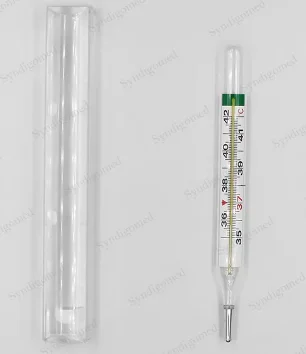What is a mercury free clinical thermometer

Body temperature measurement is an important nursing technique in nursing work. Clinically, measuring body temperature for patients and observing its changes are of great significance for diagnosing diseases or judging the prognosis of certain diseases. Thermometers without Gallium are often referred to as mercury free clinical thermometers. Mercury free clinical thermometer can also be called "medical thermometer", which can be used to measure human body temperature.
How the mercury free clinical thermometer works
The main function of mercury free clinical thermometer is temperature measurement medium. Taking Syndigomed as an example, the temperature measuring medium of Syndigomed mercury free clinical thermometer is gallium. The volume of the glass bubble of the Syndigomed mercury free clinical thermometer is much larger than that of the thin tube above. Due to the influence of body temperature, the gallium in the bubble changes slightly, and the expansion of the gallium volume causes the length of the gallium column in the tube to change significantly. The neck of the lower part of the mercury free clinical thermometer near the vacuole is a very narrow curved neck. When measuring body temperature, the gallium in the glass bulb expands as the temperature rises, and is squeezed through a thin tube to a straight tube, and the neck The minute rises to a certain position in the tube, and when it reaches thermal equilibrium with body temperature, the gallium column is constant. The outside air temperature is low, the gallium shrinks in volume when it is cold, and it is disconnected at the narrow curved neck part, so that the gallium in the thin tube cannot return to the glass bubble, and still maintains the height reached when the Gallium column is in contact with the human body, so it is separated from the body. It still represents the temperature of the human body.










Comments (0)